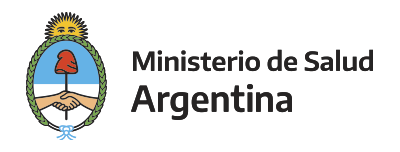Use este identificador para citar ou linkar para este item:
http://sgc.anlis.gob.ar/handle/123456789/2662| Título: | Albendazole and ivermectin for the control of soil-transmitted helminths in an area with high prevalence of Strongyloides stercoralis and hookworm in northwestern Argentina: A community-based pragmatic study | Autor(es): | Echazú, Adriana Juarez, Marisa Vargas, Paola Cajal, Pamela S. Cimino, Rubén Oscar Heredia, Viviana I. Caropresi, S. Liliana Paredes, Gladys Arias, Luis Abril, Marcelo Gold, Silvia Lammie, Patrick Krolewiecki, Alejandro J. |
Data do documento: | 9-Out-2017 | Editora: | Malcolm Jones, University of Queensland, AUSTRALIA | Citação: | Echazu´ A, Juarez M, Vargas PA, Cajal SP, Cimino RO, Heredia V, et al. (2017) Albendazole and ivermectin for the control of soil-transmitted helminths in an area with high prevalence of Strongyloides stercoralis and hookworm in northwestern Argentina: A community-based pragmatic study. PLoS Negl Trop Dis 11(10): e0006003. https://doi.org/10.1371/journal. pntd.0006003 | Projeto: | Fundacion Mundo Sano | Jornal: | PLOS Neglected Tropical Diseases | Resumo: | Background Recommendations for soil-transmitted helminth (STH) control give a key role to deworming of school and pre-school age children with albendazole or mebendazole; which might be insufficient to achieve adequate control, particularly against Strongyloides stercoralis. The impact of preventive chemotherapy (PC) against STH morbidity is still incompletely understood. The aim of this study was to assess the effectiveness of a community-based program with albendazole and ivermectin in a high transmission setting for S. stercoralis and hookworm. Methodology Community-based pragmatic trial conducted in Tartagal, Argentina; from 2012 to 2015. Six communities (5070 people) were enrolled for community-based PC with albendazole and ivermectin. Two communities (2721 people) were re-treated for second and third rounds. STH prevalence, anemia and malnutrition were explored through consecutive surveys. Anthropometric assessment of children, stool analysis, complete blood count and NIE- ELISA serology for S. stercoralis were performed. Principal findings STH infection was associated with anemia and stunting in the baseline survey that included all communities and showed a STH prevalence of 47.6% (almost exclusively hookworm andS. stercoralis). Among communities with multiple interventions, STH prevalence decreased from 62% to 23% (p<0.001) after the first PC; anemia also diminished from 52% to 12% (p<0.001). After two interventions S. stercoralis seroprevalence declined, from 51% to 14% (p<0.001) and stunting prevalence decreased, from 19% to 12% (p = 0.009). Conclusions Hookworm’ infections are associated with anemia in the general population and nutritional impairment in children. S. stercoralis is also associated with anemia. Community-based deworming with albendazole and ivermectin is effective for the reduction of STH prevalence and morbidity in communities with high prevalence of hookworm and S. stercoralis. |
URI: | http://sgc.anlis.gob.ar/handle/123456789/2662 | DOI: | ttps://doi.org/10.1371/journal.pntd.0006003 |
| Aparece nas Coleções: | Parasitosis intestinales en Argentina |
Arquivos neste item:
| Arquivo | Descrição | Tamanho | Formato | |
|---|---|---|---|---|
| 07. PLoS Negl Trop Dis 11(10), e0006003, 2017.pdf | 2.88 MB | Adobe PDF | Ver/Aberto |
Visualização de página
63
Checado em 13/12/2025
Download(s)
3
Checado em 13/12/2025
Google ScholarTM
Checar
Altmetric
Altmetric
Os itens no repositório estão protegidos por copyright, com todos os direitos reservados, salvo quando é indicado o contrário.

